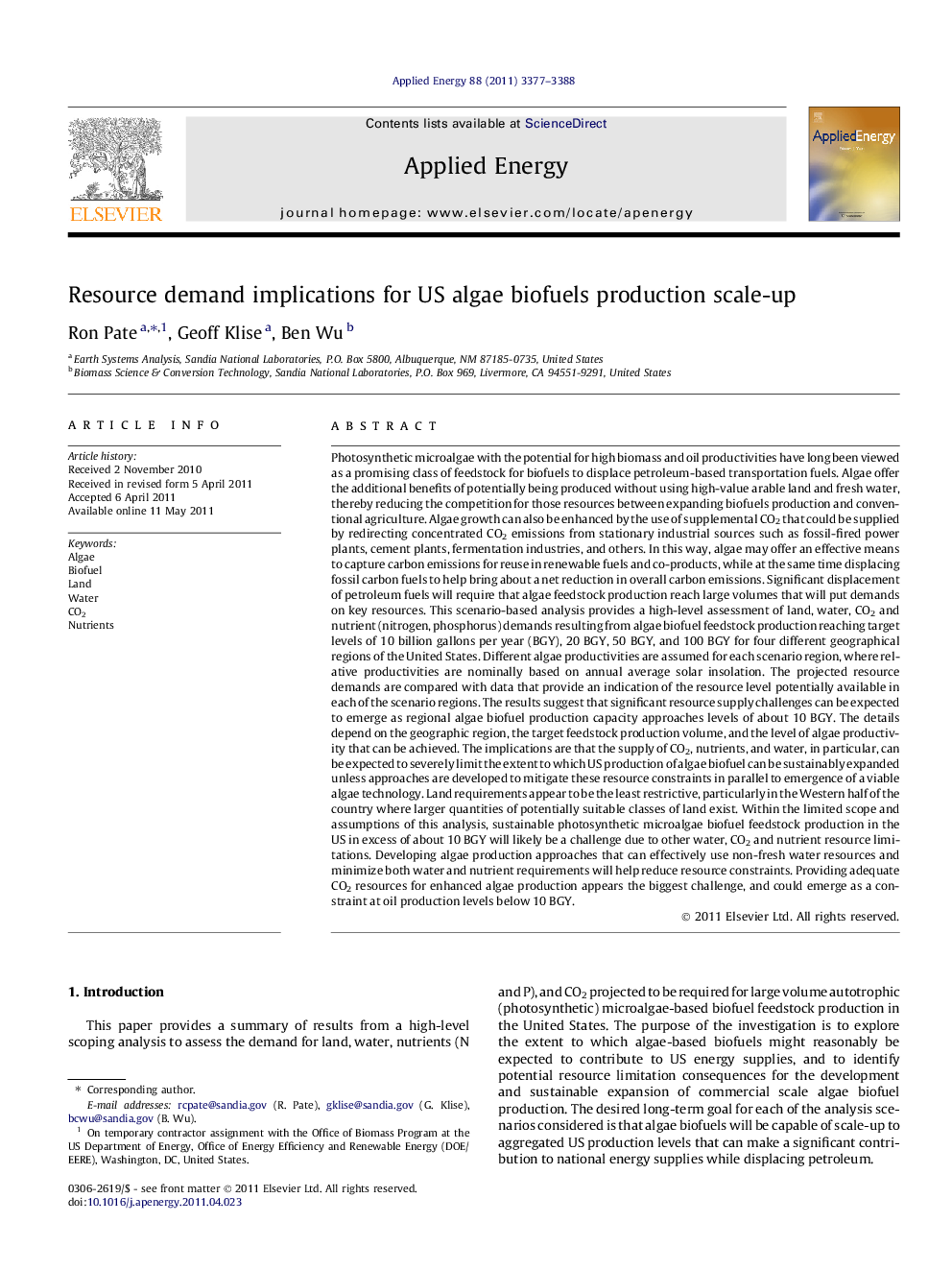| کد مقاله | کد نشریه | سال انتشار | مقاله انگلیسی | نسخه تمام متن |
|---|---|---|---|---|
| 244300 | 501946 | 2011 | 12 صفحه PDF | دانلود رایگان |

Photosynthetic microalgae with the potential for high biomass and oil productivities have long been viewed as a promising class of feedstock for biofuels to displace petroleum-based transportation fuels. Algae offer the additional benefits of potentially being produced without using high-value arable land and fresh water, thereby reducing the competition for those resources between expanding biofuels production and conventional agriculture. Algae growth can also be enhanced by the use of supplemental CO2 that could be supplied by redirecting concentrated CO2 emissions from stationary industrial sources such as fossil-fired power plants, cement plants, fermentation industries, and others. In this way, algae may offer an effective means to capture carbon emissions for reuse in renewable fuels and co-products, while at the same time displacing fossil carbon fuels to help bring about a net reduction in overall carbon emissions. Significant displacement of petroleum fuels will require that algae feedstock production reach large volumes that will put demands on key resources. This scenario-based analysis provides a high-level assessment of land, water, CO2 and nutrient (nitrogen, phosphorus) demands resulting from algae biofuel feedstock production reaching target levels of 10 billion gallons per year (BGY), 20 BGY, 50 BGY, and 100 BGY for four different geographical regions of the United States. Different algae productivities are assumed for each scenario region, where relative productivities are nominally based on annual average solar insolation. The projected resource demands are compared with data that provide an indication of the resource level potentially available in each of the scenario regions. The results suggest that significant resource supply challenges can be expected to emerge as regional algae biofuel production capacity approaches levels of about 10 BGY. The details depend on the geographic region, the target feedstock production volume, and the level of algae productivity that can be achieved. The implications are that the supply of CO2, nutrients, and water, in particular, can be expected to severely limit the extent to which US production of algae biofuel can be sustainably expanded unless approaches are developed to mitigate these resource constraints in parallel to emergence of a viable algae technology. Land requirements appear to be the least restrictive, particularly in the Western half of the country where larger quantities of potentially suitable classes of land exist. Within the limited scope and assumptions of this analysis, sustainable photosynthetic microalgae biofuel feedstock production in the US in excess of about 10 BGY will likely be a challenge due to other water, CO2 and nutrient resource limitations. Developing algae production approaches that can effectively use non-fresh water resources and minimize both water and nutrient requirements will help reduce resource constraints. Providing adequate CO2 resources for enhanced algae production appears the biggest challenge, and could emerge as a constraint at oil production levels below 10 BGY.
► We assess key resource demands for multiple algae biofuels production scale-up scenarios.
► We examine requirements for land, water, nutrients, and CO2 for selected biomass and oil production.
► Land requirements appear most manageable, but water, nutrients, and CO2 use will limit scale-up.
► Scale-up of algae biofuels in the US beyond about ten billion gal/yr will likely be a challenge.
► Resource constraints can be reduced through use of non-fresh water sources and nutrient recycling.
Journal: Applied Energy - Volume 88, Issue 10, October 2011, Pages 3377–3388